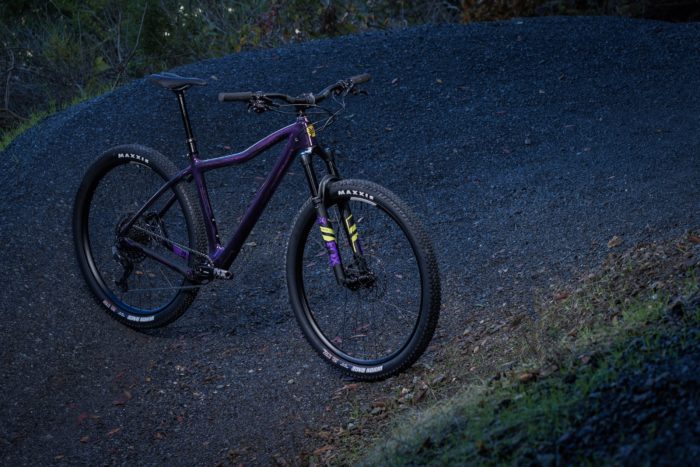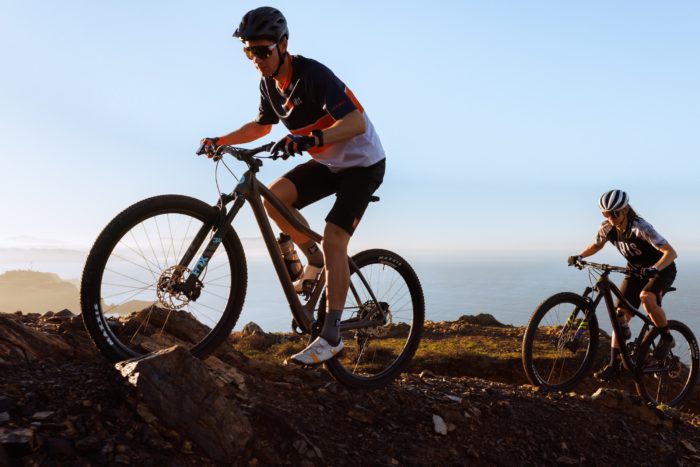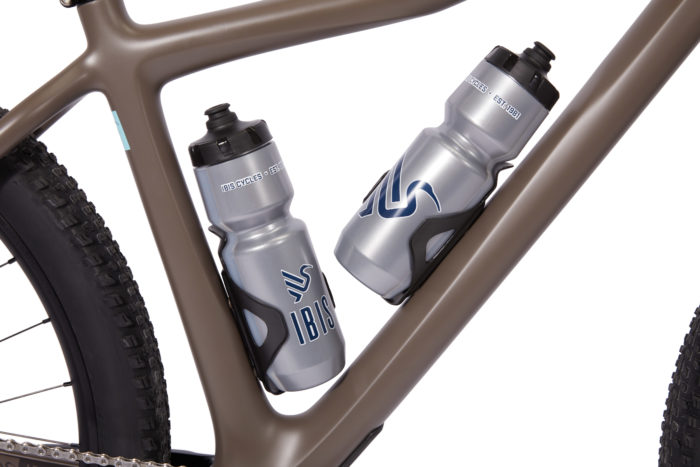At a glance, the Ibis DV9 is your everyday carbon hardtail. The 29er comes with wide 2.6-inch tire clearance and 148mm boost spacing, flexy front travel from 100 mm to 140 mm depending on spec, and quasi-Enduro geometry (66.5-degree head angle, dropper post-compatible in all sizes).
But under the surface, it aspires to more: Ibis specifically built the bike for under-resourced, high school MTB riders. Ibis co-owner Hans Heim got the idea while he helped out his daughter’s team at a practice.
There, he noticed a lot of kids were facing overly steep challenges due to sub-par equipment. It’s no secret that mountain bikes are price-prohibitive and smaller sizes are often hard to find.
So he and Ibis decided to address the problem. Now in its second generation, the DV9 is geared toward smaller riders and a less painful price point.
The company’s stated goal was “to build a light and fast bike that a high school student could pay off with a summer job.”

Of course, at $3,499 MSRP, that target depends heavily on the job. And it probably wouldn’t leave much room for anything else over the summer — like, vacation.
And for reference, carbon hardtails abound at price points below the DV9. However, Ibis makes proven performance mountain bikes, and price wasn’t the only youth-focused variable in the DV9.
Ibis DV9: Tailored Geometry, Builds
The DV9 does look creatively optimized toward adolescent-sized riders. Sharing similar geometry with the World Cup-winning Ibis Exie USA, it’s got a head angle one degree slacker than the previous iteration.
The seat angle is also 2-4 degrees steeper, depending on size. You’ll find longer reach on the medium and large sizes, and a sloped downtube that brings the standover height to 53 mm.
Finally, Ibis trimmed the chainstays to a playful 425 mm.

Translated: The DV9 seeks to crush the downhills with better stability from the slack head angle, 120mm stock travel, and elongated reach. But the steeper seat tube and chainstays should add power and pop for the flats and uphills. And the standover height means short riders can swing a leg over more comfortably.
There’s room for 203mm rotors and four-piston brakes. (The clearance will float a 2.6-inch tire, but the bike comes with stock 2.4-inch Maxxis rubbers.) Other touches include internal tube-in-tube cable routing (easier maintenance, no external mess), a drop-in headset, and a full-coverage rubber chainstay protector. Four sizes accommodate riders from 5 feet to 6-and-a-half feet tall.

On top of that, it’s already battle-tested. The Maxxis Factory Race Team put “discreetly” disguised prototypes through their paces in the 2022 season. Hayley Smith found immediate success on the DV9, cranking the bike to a third-place finish at August’s Leadville Trail 100.

Customers can pluck from a range of componentry across the DV9 lineup: Shimano Deore, SRAM NX/GX Eagle, and Shimano SLX drivetrains are all on board. Full builds can be expensive if you’re trying to pay for the bike with a gig at Dairy Queen, but you can also go DIY and buy a frame only (no fork) for $1,499.








